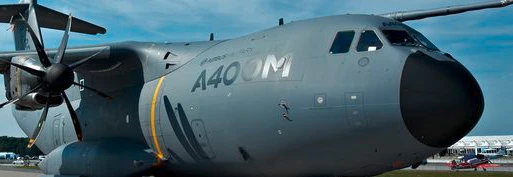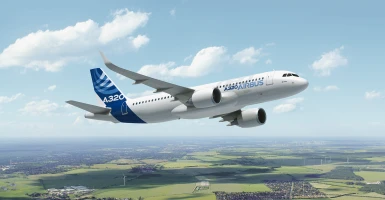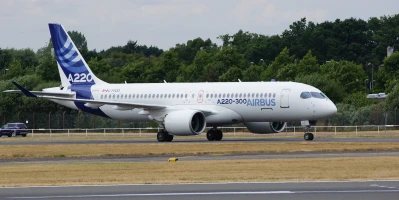aviation
The A321XLR revolutionizes long-haul flights
The Airbus A321XLR is a new class of long-haul aircraft—for the first time, a narrowbody jet can stay in the air for up to eleven hours.
author: Andreas Spaeth | 6 mins reading time published on: 29.07.2022
author:
Andreas Spaeth
has been traveling the world as a freelance aviation journalist for over 25 years, visiting and writing about airlines and airports. He is frequently invited to appear on radio and TV programs to discuss current events in the sector.

©AIRBUS SAS 2022 - photo by Bengt LANGE - Bockfilm


©Airbus SAS 2022 Bengt Lange


©Airbus SAS 2022 Bengt Lange
A321XLR maiden flight: After landing, a good hundred guests and employees greet the crew with loud cheers.

©Airbus SAS 2022 Bengt Lange
Employees and guests are lined up close to the apron, and all eyes turn toward the end of the runway close to the Elbe river. Queen Mary 2, one of the world’s biggest cruise liners, passed by there only minutes ago. Soon, there will be an important moment in recent Airbus history to be witnessed here in Hamburg-Finkenwerder: the maiden flight of the new best-selling A321XLR, the first narrowbody aircraft for long-haul routes of up to eleven hours of flight time. From the outside, the A321XLR looks no different from an ordinary Airbus A321 or its successor, the A321neo.
Things suddenly start to move quickly on this sunny morning of June 15, 2022. The plan had been for the chase plane to take off first, but unexpectedly for the onlookers, it’s the A321XLR prototype (serial number 11000, registration F-WXLR) that first gets going at 11:05 a.m. local time, before it accelerates and then takes off practically right in front of the rows of spectators. A total of 1,500 employees from Airbus and its suppliers worked for 18 months to make this happen. “This is something we’ve really been looking forward to. It’s a significant moment and I can truly feel how special it is,” says Michael Menking, Head of the Airbus A320 Family Program, just before the aircraft leaves the nearby runway.
©Airbus SAS 2022
Lower operating costs, less economic risk
Almost three decades after its first flight at the same location, the A321 program is experiencing a boom in its new long-haul version (XLR stands for extra-long range). One reason is that, following the test campaign being launched now, it is expected to be uniquely positioned by early 2024 in a completely new market segment: flying actual long-haul routes of up to 8,700 km with full payload. Even more impressive, it does this as an aircraft with just one aisle, not the usual two of the widebodies normally deployed on such routes. This lets airlines enjoy not only lower operating costs, but also considerably less economic risk: in the cabin configurations planned for long-haul routes (usually offering a luxurious business class cabin with individual lie-flat suites), only 174 or 187 seats have to be filled. In current widebodies, airlines usually need to fill far more than 200 seats, or sometimes even more than 300 or 400.
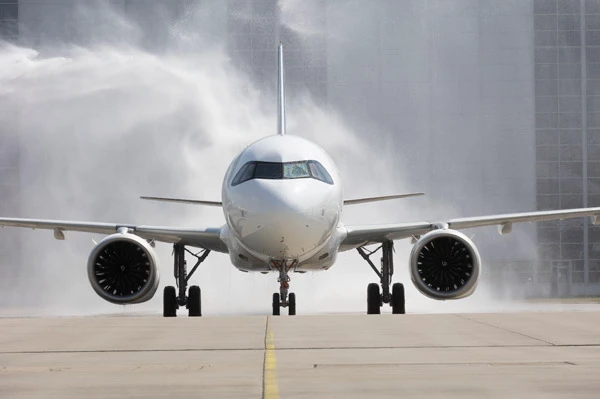

©Airbus SAS 2022 - photo bv Hermann Jansen


©Airbus SAS 2022 - photo bv Hermann Jansen
All-around talent: After three hours and 45 minutes, the prototype lands and taxis to the front of the delivery center under a water salute from the airport fire department.
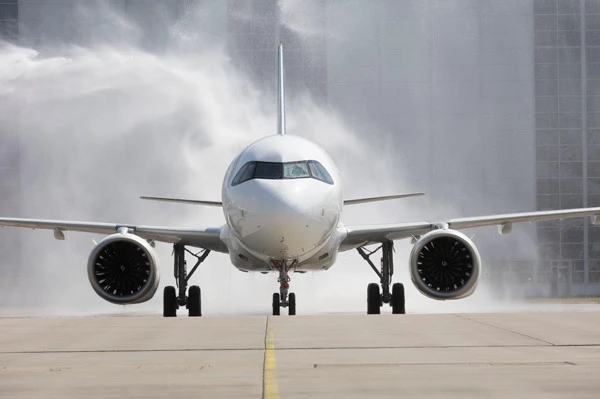
©Airbus SAS 2022 - photo bv Hermann Jansen
Long-haul comfort on a narrowbody jet
Only a few kilometers away from the first flight, the Aircraft Interiors Expo is taking place at the Hamburg fairgrounds. Narrowbodies for long-haul routes are a big topic here, too. Many seat suppliers are racing to adapt their premium cubicles—originally conceived for widebodies—to smaller jets, sliding doors and all. Following the example of U.S. airline JetBlue, which serves transatlantic routes with an A321LR (LR stands for long range), many airlines will equip the first row of narrowbody cabins with two spacious suites.
The new long-haul aircraft class enables nonstop routes that were previously unprofitable while also sparing passengers tiresome hub connections. Airbus has named the following possible destinations for nonstop flights from Hamburg or other western European airports: Orlando (USA), Punta Cana (Dominican Republic), Nassau (Bahamas), Mahé (Seychelles), Male (Maldives) or Vancouver (Canada). Airlines such as Aer Lingus, SAS and TAP Air Portugal are already operating the A321LR—the previous model and the first one suitable for long-haul flights, with a range of up to 7,400 km—over the North Atlantic and even all the way to Brazil. On the day of the XLR’s maiden flight, exactly 508 jets of the new type were ordered; the most important customers are IndiGo, United Airlines and American Airlines, as well as Wizz Air and Iberia from Europe.
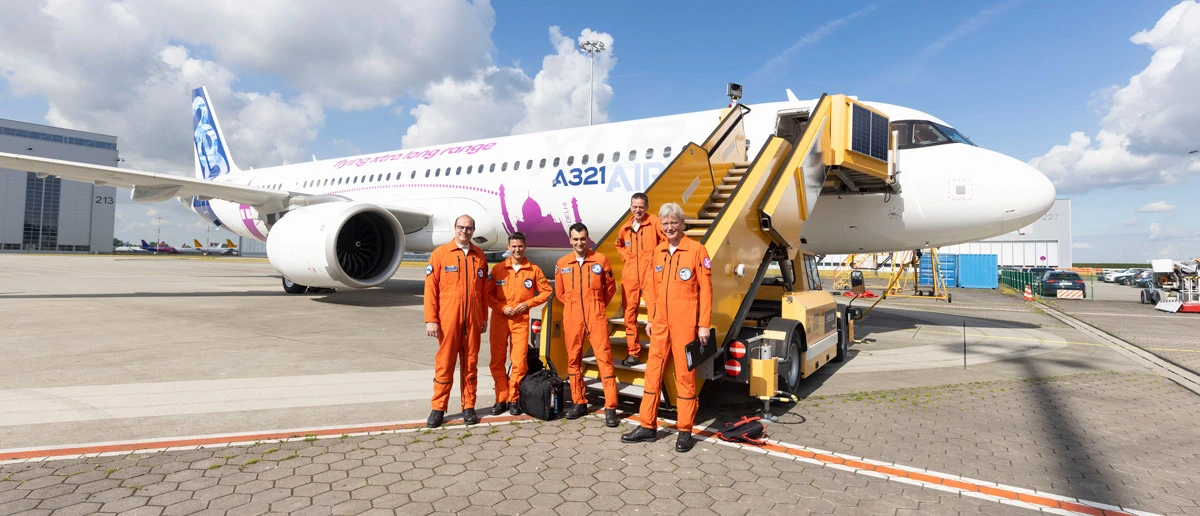
©Airbus SAS 2022 - photo by Bengt Lange
Flight crew: (left to right) Philippe Pupin, Gabriel Diaz de Villegas Giron, Mehdi Zeddoun, Thierry Diez, Frank Hohmeister ©Airbus SAS 2022 Bengt Lange – Bockfilm
Signs point to increasing fragmentation of long-haul segment
“We will see increasing fragmentation of long-haul routes with this new aircraft, which overall leads to increased market potential and growth,” says Marko Niffka, expert for Business Development – MRO at MTU. “This market segment will open up new routes and in turn entice new competitors, for example those in India with flights to eastern Europe.” One engine option of the A321XLR is the PW1100-JM geared turbofan, part of the Pratt & Whitney GTF™ engine family, which will be put through its paces on a second test aircraft this year. “This is a very attractive global market segment for us at MTU and will further contribute to the success of the geared turbofan, or GTF, as it will bring new airlines to this market and encourage existing carriers to expand further into this segment,” Niffka says. “What makes the GTF so valuable here is its fuel efficiency. Without the GTF, an aircraft needs to carry more fuel, which wouldn’t have been possible in a narrowbody on long-haul routes due to limited space.”
Here the MTU expert names the most decisive difference of the XLR versus the standard model: extra fuel tank capacity. An A321 can usually take 19 metric tons of fuel on board, but the XLR adds a rear center tank holding 12,900 liters, or about 10.6 metric tons, of fuel. Additionally, if XLR customers really want to exploit the full range, another tank can be installed in front of the wings like a container in the cargo hold, taking on yet another 3,120 liters or 3.2 metric tons. About half the customers are requesting this option. With almost 14 metric tons of extra fuel, the aircraft can fly much farther, but also gains up to 8 metric tons in weight. That’s why the A321XLR needed new landing gear. And to improve its maneuverability in the air, it also features new flaps on the wing trailing edges.

©Airbus SAS 2022 - photo bv Lutz Borck
June 15, 2022: The maiden flight of the Airbus A321XLR opens up new market potential:
in the future, this narrowbody jet will be able to cover distances of up to 8,700 km.
All-around talent for passenger air travel
After crisscrossing northern Germany and the North Sea for three hours and 45 minutes at altitudes between 1,500 and 9,000 meters, the prototype—one of three test aircraft set to obtain certification after roughly a thousand flight hours—performs a spectacular steep bank over the company airfield. Afterward, it touches down and taxies to the front of the delivery center underneath a water salute from the airport firefighters. About a hundred guests and employees greet the crew with jubilant cheers. Captain of the first flight was French pilot Thierry Diez, who has over 8,000 flight hours under his belt. “This aircraft is as universal as a Swiss Army knife and allows us to fly short-, medium- and long-haul routes with the same pilot type rating,” he says enthusiastically.

Powerful engine for the Airbus A321XLR
With a maximum thrust of 35,000 pounds, the PW1100G-JM is already in use with the A320neo family and will also power the new long-haul jet in the future. It is part of Pratt & Whitney’s highly successful GTF engine family.
MTU Aero Engines, with a program share of 18 percent, is responsible for the high-speed low pressure turbine and the first four stages of the high-pressure compressor. It also carries out the final assembly of one-third of the production PW1100G-JM for the A320neo at its Munich site. These engines are maintained at MTU Maintenance Hannover, MTU Maintenance Zhuhai, EME Aero and MTU in Munich.
The GTF family is synonymous with efficiency and economy. Compared to the previous engine generation, the GTF engines represent a reduction in fuel consumption and carbon dioxide emissions of 16 percent each with a noise footprint that is 75 percent smaller.



